RangeName property (Excel) ;Range names are names used to refer to cell references, formula results, or values They are often used to avoid hardcoded values appearing in formulas and to make formulas clearer in general They are stored in what is known as the Name Manager in ExcelSelect the range you want to name, including the row or column labels Select Formulas > Create from Selection In the Create Names from Selection dialog box, designate the location that contains the labels by selecting the Top row,Left column, Bottom row, or Right column check box

Naming A Cell Or Range In Excel With Formula Excelnumber
Delete range name excel
Delete range name excel-In this article Returns or sets a Variant value that represents the name of the object Syntax expressionName expression A variable that represents a Range object Remarks The name of a Range object is a Name object Support and feedbackChoose Formulas, Defined Names, Create From Selection, to launch the Create Names dialog (Or you can press CtrlShiftF3) Then, in the Create Names dialog, make sure that only Left Column is checked, and then choose OK Second, select the range




Range Names Excel Steve Chase Docs
The easiest way to create a dynamic named range is to start by creating a named Excel table Then, define a range based on one or more columns in that table In this example there is a list of parts on the worksheet, and a named table, and dynamic named ranges will be createdIf you want to follow along with this tutorial, download the example spreadsheet Download Example Question In Microsoft Excel 16, how do I set up a named range so that I can use it in a formula?Http//wwwcontexturescom/xlNames01htmlAfter you name cells, you can use that name in a formula, or to select the named cells
Named ranges are a useful, but often underutilized, feature of Microsoft Excel Named ranges can make formulas easier to understand (and debug), simplify the creation of complicated spreadsheets, and simplify your macros A named range is just a range (either a single cell, or a range of cells) to which you assign a nameTo find the top or bottom values in a range of cells or table, such as the top 10 grades or the bottom 5 sales amounts, use AutoFilter or conditional formatting For more information, see Filter data in an Excel table or range, and Apply conditional formatting in ExcelNormally, Named Ranges are very useful for Excel users, you can define a series of values in a column, give that column a name, and then you can refer to that range by name instead of its cell references But most time, you need to add new data to expand the data values of your referred range
Summary To get the full address of a named range with an Excel formula, you can use the ADDRESS function together with the ROW and COLUMN functions In the example shown, the formula in G5 is = ADDRESS(ROW( data ),COLUMN( data ),4) & "" & ADDRESS(ROW( data) ROWS( data) 1,COLUMN( data) COLUMNS( data) 1,4) where "data" is the named By Charley Kyd 1950 Many Excel users seldom use range names This fact always surprises me because Excel names are powerful, flexible, and easy to use Excel offers two standard ways to define range names, Define Name and Create Name For most purposes, Define Name offers the most power To use it, choose Insert, Name, Define It's easy to name a range of cells – here's what I usually do (there's a video at the end of this article too) Select the cells that you want to name Type a valid oneword name for those cells, in the Name Box at the left of the Formula Bar Press Enter, to complete the name
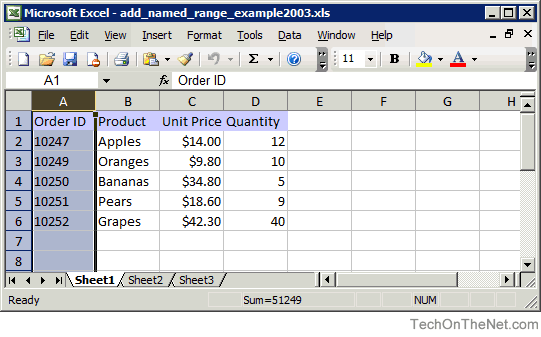



Ms Excel 03 Add A Named Range




Excel 16 Tutorial Naming Ranges Microsoft Training Lesson Youtube
I have worked with Excel Names since they first appeared many moons ago Excel 07 has made it easier with the Name Manager as you can now "rename" a Name I've just written a couple of posts specifically on Naming Conventions for Excel Named Ranges My concept going right back to Excel 95 was to prefix all names2 minutes to read;A dynamic named range expands automatically when you add a value to the range 1 For example, select the range A1 and name it Prices 2 Calculate the sum 3 When you add a value to the range, Excel does not update the sum To expand the named range automatically when you add a value to the range, execute the following the following steps



1



1
Excel created 12 3 = 15 named ranges! https//wwwnavitendcom social@navitendcom http//wwwnavitendcom/blog/article/namecellsinexcel Learn how to name groups of cells in Microsoft Excel CName range in excel are the ranges which have been given a name for the future reference, to make a range as named range first select the range of data and then insert a table to the range, then we put a name to the range from the name box in the lefthand side of the window, after this we can refer to the range by its name in any formula
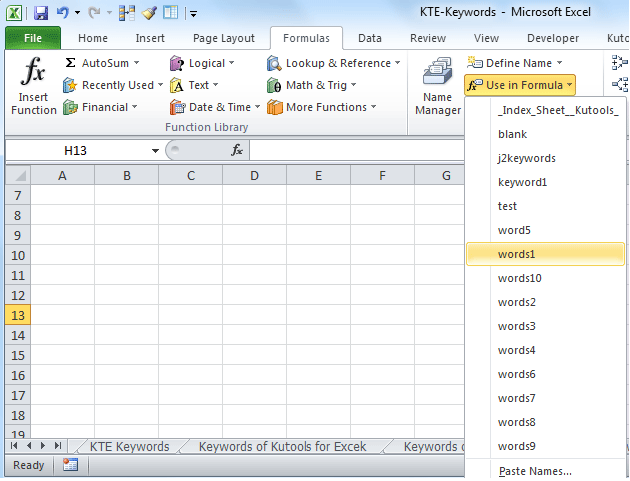



How To List Named Ranges In Excel



Master Range Names In Excel Online Tutorial Excel Launchpad
Select the range you want to name, including the row or column labels Click Formulas > Create from Selection In the Create Names from Selection dialog box, select the checkbox (es) depending on the location of your row/column header If you have only a header row at the top of the table, then just select Top rowTo name a cell or cell range in an Excel worksheet, follow these steps Select the single cell or range of cells that you want to name Click Formulas → Defined Names → Define Name (AltMZND) to open the New Name dialog box Naming a cell range in the Excel worksheet in the New Name dialog box Type the name for the selected cell or cell To do so, select the range A1B4;




How To Find Named Range Reference In Excel




Excel Range Names What You Need To Know Fm
On the Formula tab, in the Defined Names group, click Define Name Or, press Ctrl F3 to open the Excel Name Manger, and click the New button In the Name box, type the name for your dynamic range In the Scope dropdown, set the name's scope Workbook (default) is recommended in most casesNote A table name is the name for an Excel table, which is a collection of data about a particular subject stored in records (rows) and fields (columns)Excel creates a default Excel table name of Table1, Table2, and so on, each time you insert an Excel table You can change a table's name to make it more meaningful When data is added, Excel table will automatically extend the range name This works only in the vertical direction (not horizontal) Of course, there are many more practical uses of Range Names in Excel But we will cover those in later posts
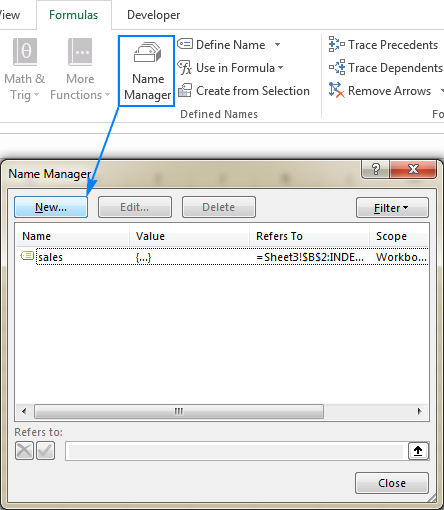



Excel Names And Named Ranges How To Define And Use In Formulas




The Vba Guide To Named Ranges Thespreadsheetguru
You can also define your data as a database and create defined names for each chart data series To use this method, follow these steps In a new worksheet, type the following data Select the range A1B4, and then click Set Database on the Data menu On the Formula menu, click Define Name In the Name box, type DateAnswer A named range is a descriptive name for a collection of cells or range in a worksheet To add a named range, select the range of cells that you wish to nameYou can find a named range by using the Go To feature—which navigates to any named range throughout the entire workbook You can find a named range by going to the Home tab, clicking Find & Select, and then Go To Or, press CtrlG on your keyboard In the Go to box, doubleclick the named range you want to find
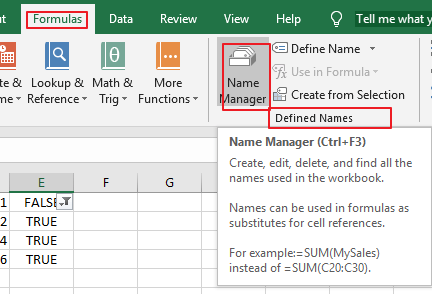



How To Delete All Named Ranges In Excel Free Excel Tutorial
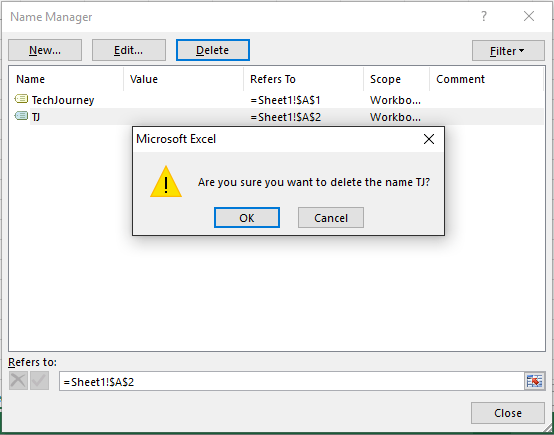



Delete A Defined Name Named Range In Excel Tech Journey
After creating the named range all you need to is use the named range in the SUM formula Alternatively, you can place the SUM function into the named range However, remember to select the cell D3 before any updates in the named range With this named range, users can only see the name Ranges are easier to identify by name than by A1 notation To name a selected range, click the name box at the left end of the formula bar, type a name, and then press ENTER Note There are two types of named ranges Workbook Named Range and WorkSHEET Specific Named Range In Microsoft Excel, you can create and use two types of names Defined name a name that refers to a single cell, range of cells, constant value, or formula For example, when you define a name for a range of cells, it's called a named range, or defined range These names are subject of today's tutorial



1




Range Names Excel Steve Chase Docs
A named range in Excel is nothing more than a cell or range of cells that has been given a friendly, descriptive name Naming your ranges allows you use easily recognizable names in your formulas instead of cell addresses For instance, say that you have lineitem sales in cells A15 and you have a percent tax in cell B1 Naming a range of cells in Excel provide an easy way to reference those cells in a formula If you have a workbook with a lot of data on the worksheets, naming ranges of cells can make your formulas easier to read and less confusing RELATED How to Assign a Name to a Range of Cells in Excel Excel includes a feature, called "Names", that can make your formulas more readable and less confusing Instead of referencing a cell or range of cells, you can assign a name to that cell or range and use that name in formulas This will make your formulas much easier to understand and maintain RELATED How to Use VLOOKUP in Excel




Naming A Cell Or Range In Excel With Formula Excelnumber
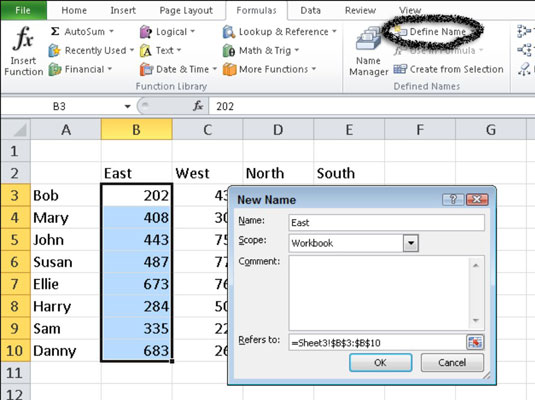



How To Name A Cell Or Range In Excel 10 Dummies
In this video, you'll learn more about what named ranges are in Excel Visit https//wwwgcflearnfreeorg/exceltips/ to learn even moreWe hope you enjoy!MS Excel Name RangeWatch More Videos at https//wwwtutorialspointcom/videotutorials/indexhtmLecture By Mr Pavan Lalwani, Tutorials Point India PrivatAdd a Name Range 1 Type Months from Cell A1 to A12 2
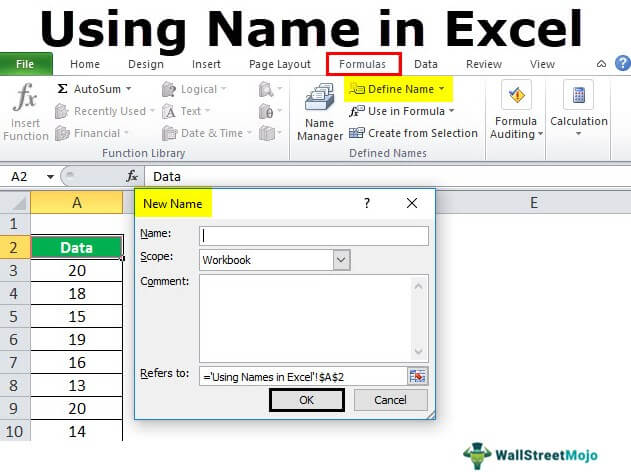



Name Range In Excel Examples How To Use Names In Excel




Excel Tips 25 Name Box Techniques Accountingweb
To define a range name in Excel, you first need to select the cell or range of cells that you would like to work with For this example, select cells in the sample workbook Next, click Formulas → Define Name (not the dropdown arrow) ThisWith Excel, you can create and use meaningful names to various parts of your data The advantages of using range names include − A meaningful Range name (such as Cash_Flows) is much easier to remember than a Range address (such as C6C8) Entering a name is less error prone than entering a cell or range addressSimply select a range and look at the Name box 15 Use the intersect operator (space) to return the intersection of two named ranges Note try it yourself Download the Excel file, create the named ranges quickly and easily (start with step 11) and lookup any value in this twodimensional range




How To Create Named Ranges To Use In Excel Formulas Youtube




Named Ranges In Excel Exceljet
Range Names In Excel How To Define Range Names There is a number of ways you can name a range of cells The first one is by using the Name box to the immediate left of the formula bar (see fig 1) When the current selected range is already named, the name box will show its nameExcel Named Ranges makes it easy to refer to data sets in Excel You can create a named range in Excel for each data category, and then use that name instead of the cell references For example, dates can be named 'Date', Sales Rep data can be named 'SalesRep' and sales data can be named In Excel 07, click the Formulas tab, and then click Define Name in the Defined Names group In Excel 03 and in earlier versions of Excel, point to Name on the Insert menu, and then click Define In the Define Names dialog box, in the Names In workbook box, type Range2, and then click OK Press ALTF11 to start the Visual Basic editor




Named Ranges In Excel Exceljet




Creating And Using Named Ranges Microsoft Excel 365
Name is a "name" object of a range for which you then take the "name" property – Lance Roberts Feb 5 '18 at 1901 @Lance yes thx, this is my confusion btwn Collection, Objects and Ranges, so depending on how sampleRange is set – hornetbzz Feb 6 '18 at 1111Option 2 Using the Use in Formula dropdown list Click the "Use in Formula" dropdown list from the "Formula" Tab as shown in the screenshot which should display the list of all the named ranges use din the workbook s Excel 16 how to MS Office tipsAbout Press Copyright Contact us Creators Advertise Developers Terms Privacy Policy & Safety How works Test new features Press Copyright Contact us Creators
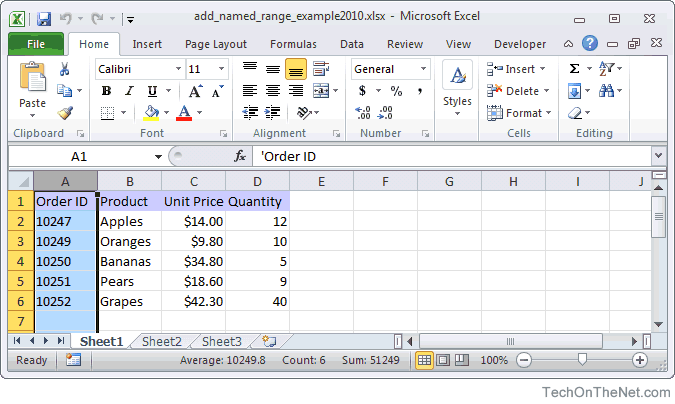



Define Name Excel Mac
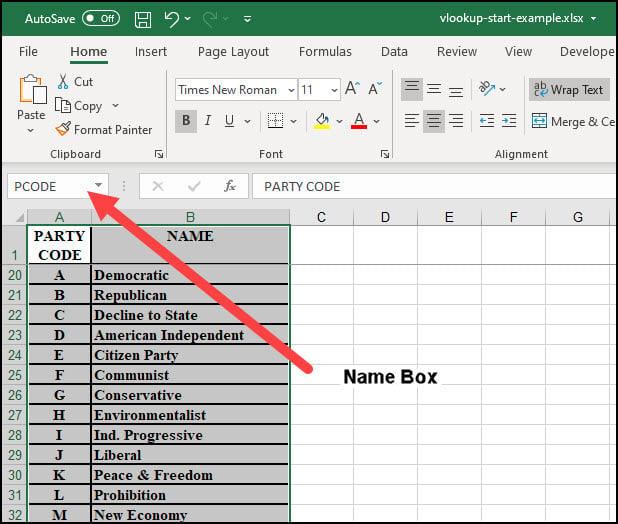



Easily Assign An Excel Range Name Productivity Portfolio
One overlooked feature of Excel is the ability to create named ranges A named range is a workbook object that allows you to refer to a cell or a range of cells with a descriptive name rather than a cell reference When you change the cells that a named range refers to, the formulas that use it are automatically updated In this tutorial, I This means the named range can be accessed by any worksheet in your Excel file Creating Names With The "Name Manager" If you want to customize your named ranges even more, you can open up the Name Manager ( Formulas tab > Defined Names group > Name Manager button) to edit and create new named ranges




Named Ranges In Excel Exceljet



How To Define And Edit A Named Range In Excel




Range Names Excel Steve Chase Docs




How To See All Of The Named Cell Ranges In An Excel Workbook




Name Range On Mac For Excel Fasronline




Name Range In Excel




Naming A Cell Or Range In Excel With Formula Excelnumber
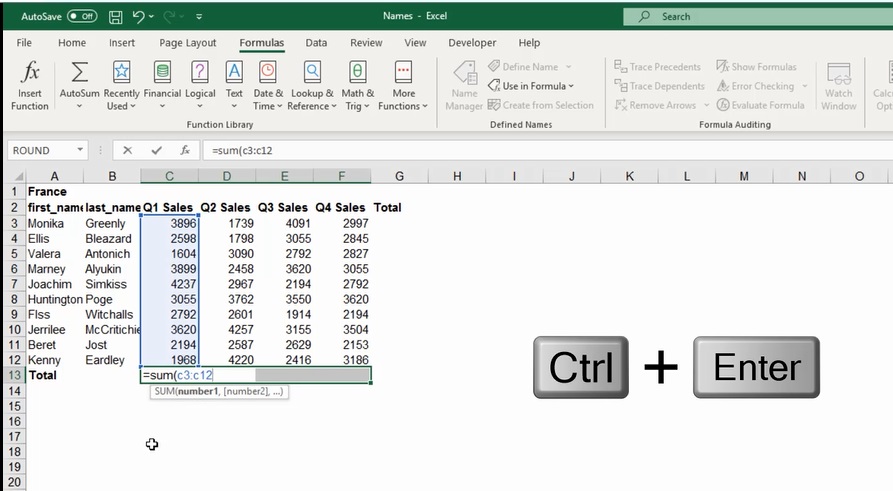



Meruj9q3slm7sm
/NameBox-5be366ed46e0fb00519ef15a.jpg)



How To Define And Edit A Named Range In Excel
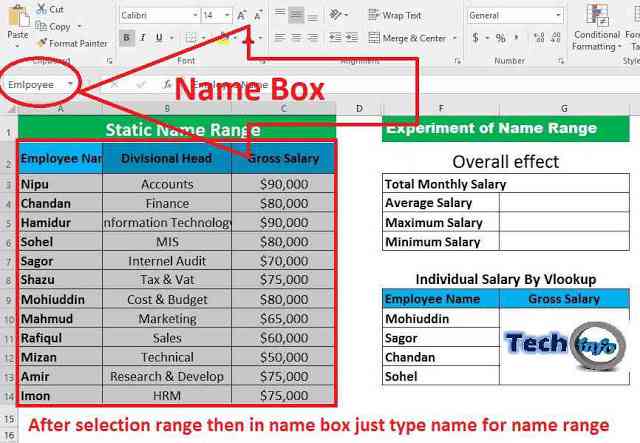



Static Name Range In Excel Tech Info




Excel For Mac Named Range Learnfasr




How To Delete A Named Range In Excel Microsoft Excel Tips Youtube
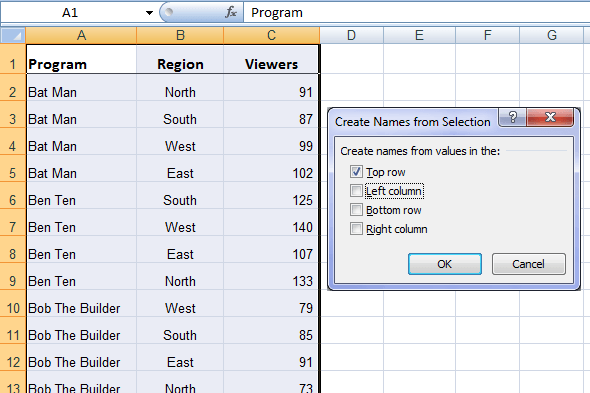



Excel Named Ranges Explained My Online Training Hub




Use The Name Manager In Excel Excel




Easily Assign An Excel Range Name Productivity Portfolio
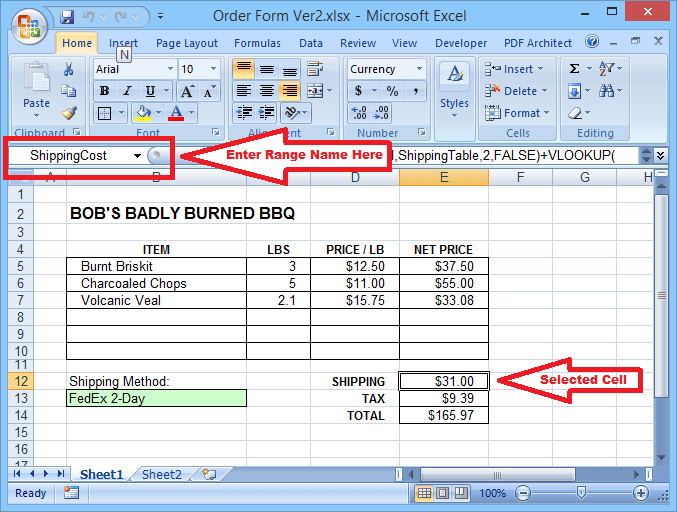



Why You Should Be Using Named Ranges In Excel
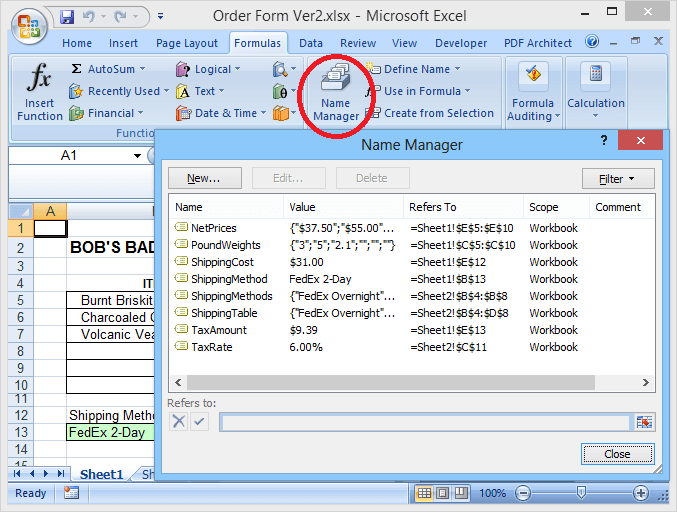



Why You Should Be Using Named Ranges In Excel
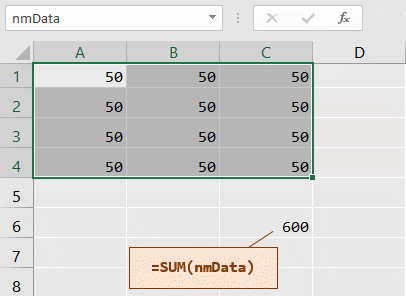



Excel Macros For Naming Cell Ranges




How To Assign A Name To A Range Of Cells In Excel
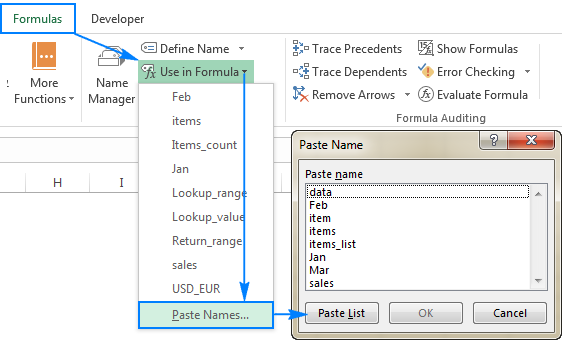



Excel Names And Named Ranges How To Define And Use In Formulas




How To Correct A Name Error Office Support
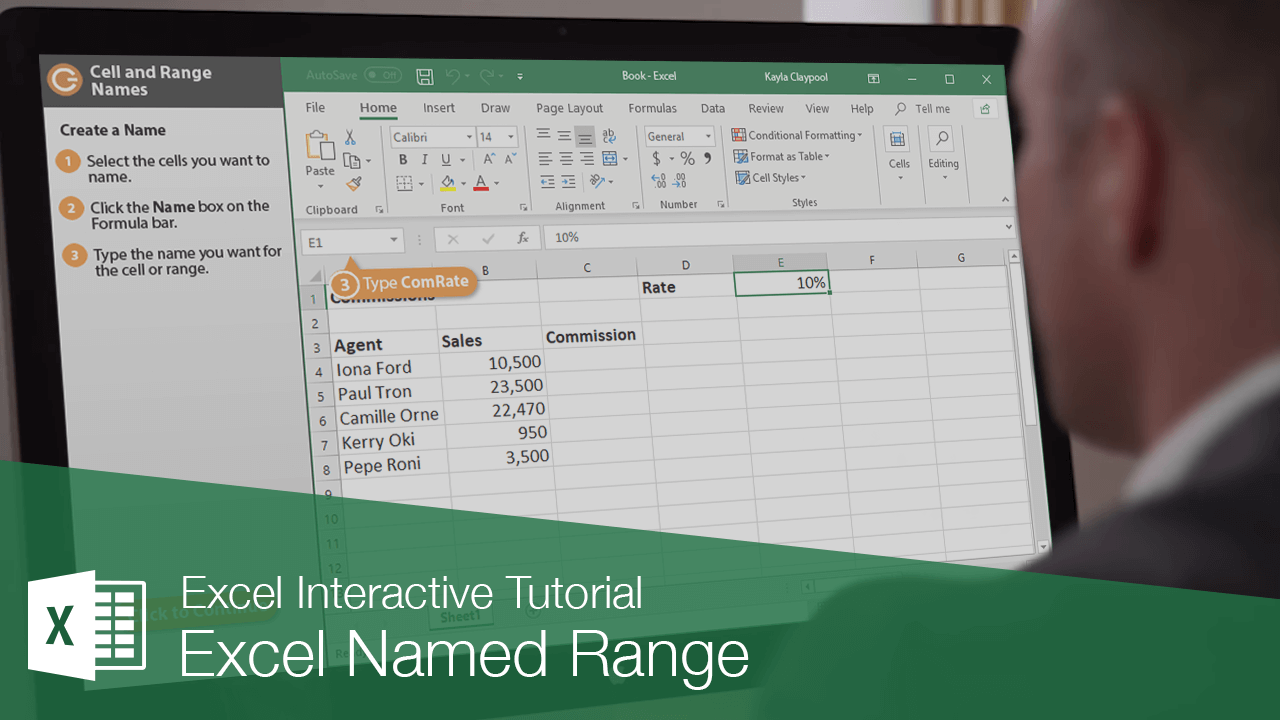



Excel Named Range Customguide
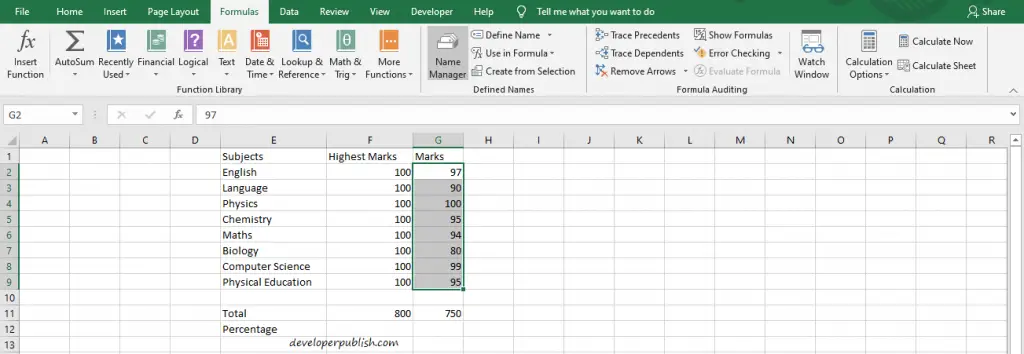



Dynamic Named Range In Microsoft Excel Developer Publish
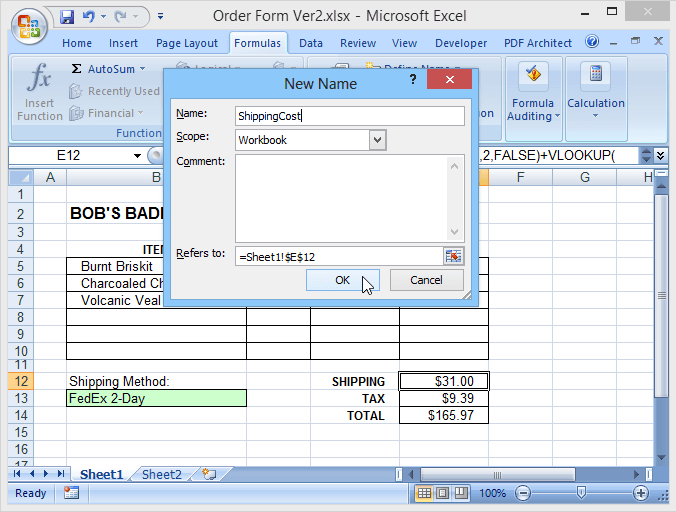



Why You Should Be Using Named Ranges In Excel
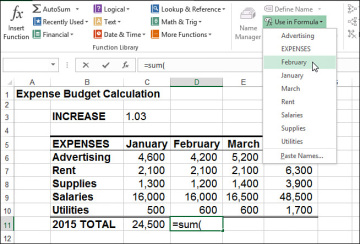



Working With Range Names In Formulas Building Basic Formulas In Excel 16 Informit




How To Assign A Name To A Range Of Cells In Excel
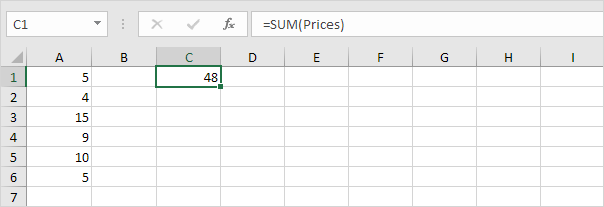



Dynamic Named Range In Excel Easy Excel Tutorial



Create Chart Using Named Range In Excel Excel Vba Databison




How To Create Named Ranges In Excel A Step By Step Guide
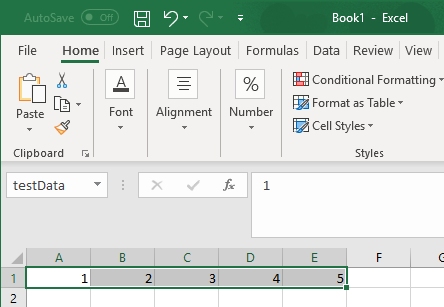



Create Or Overwrite Matlab Matrix With Data From Microsoft Excel Worksheet Matlab Mlputmatrix Mathworks Nordic




Define Name Excel For Drop Down List



1



Quickly Changing Or Deleting Named Ranges Daily Dose Of Excel



Master Range Names In Excel Online Tutorial Excel Launchpad




Work With Named Ranges On Different Sheets In Excel



How To Define And Edit A Named Range In Excel




Creating A Chart Using A Dynamic Named Range In Excel 10 Super User




How To Create Name Range In Excel Complete Guide 21




Name Range On Mac For Excel Teddyquestions
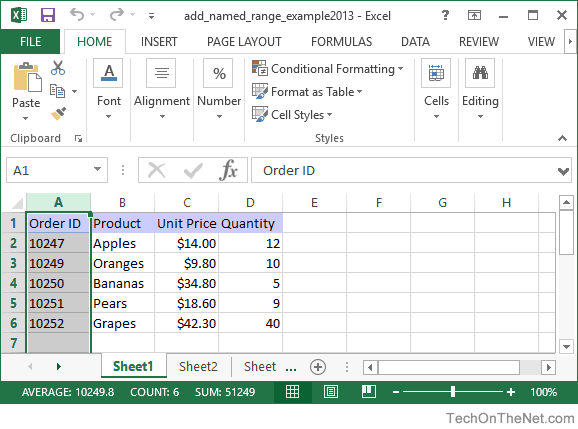



Ms Excel 13 Add A Named Range




Name A Range Of Cells In Excel Youtube




Using Named Ranges Customisations Business Fitness Help Support




Excel Range Names In Excel Define




How To Make Excel Remove Named Range Containing Errors
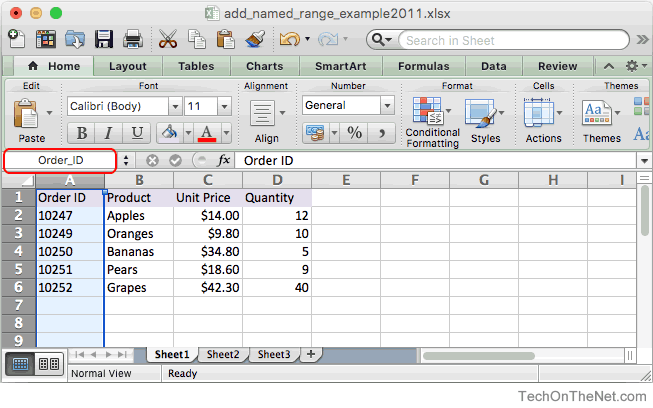



Ms Excel 11 For Mac Add A Named Range
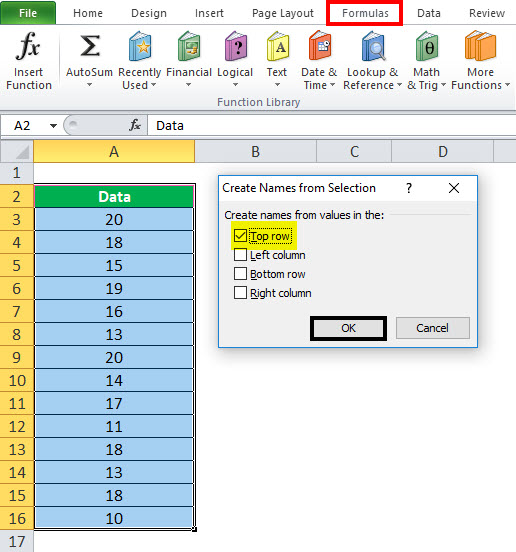



Name Range In Excel Examples How To Use Names In Excel
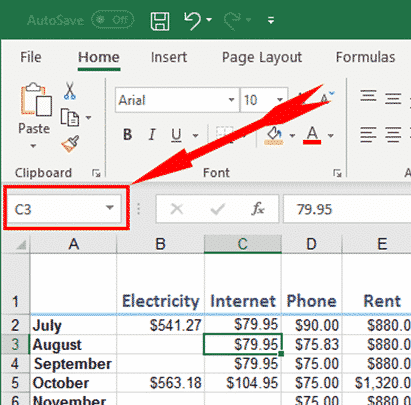



Using The Name Box In Excel Office Watch
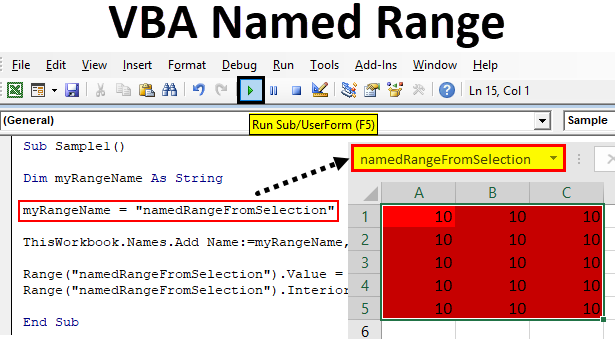



Vba Named Range How To Use Vba Named Range In Excel Vba




How To Use Dynamic Named Ranges In Excel




How To Create And Use Excel Named Ranges




How To Create And Use Excel Named Ranges
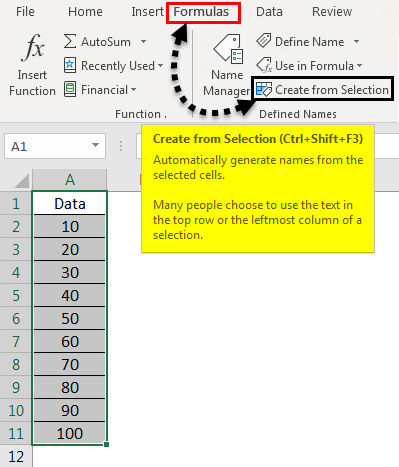



Named Range In Excel How To Create Named Range In Excel
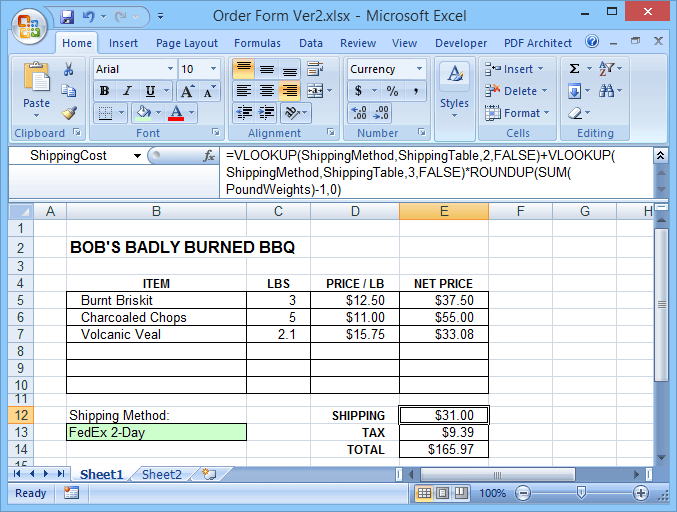



Why You Should Be Using Named Ranges In Excel
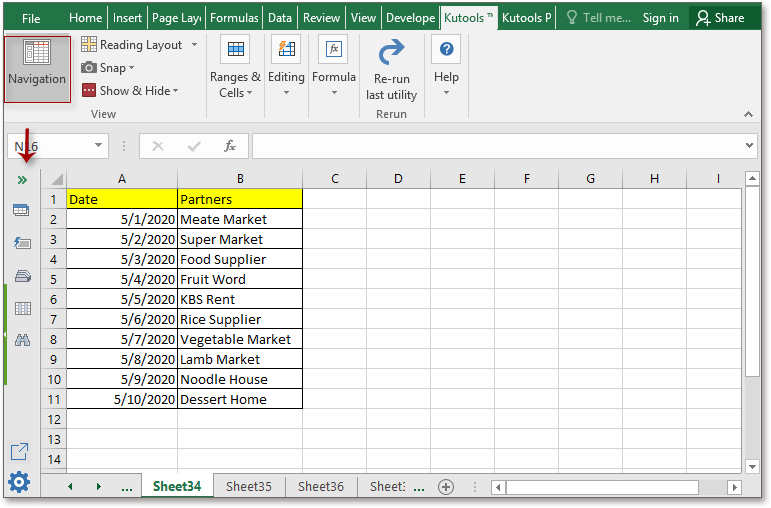



How To Find Named Range Reference In Excel
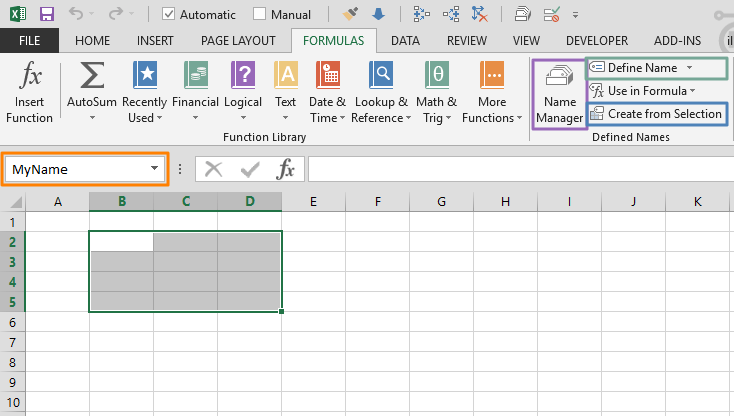



5 Ways To Create An Excel Named Range
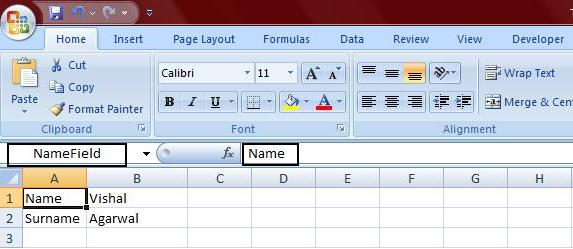



Intelligent Factory Excel Named Ranges In Epplus
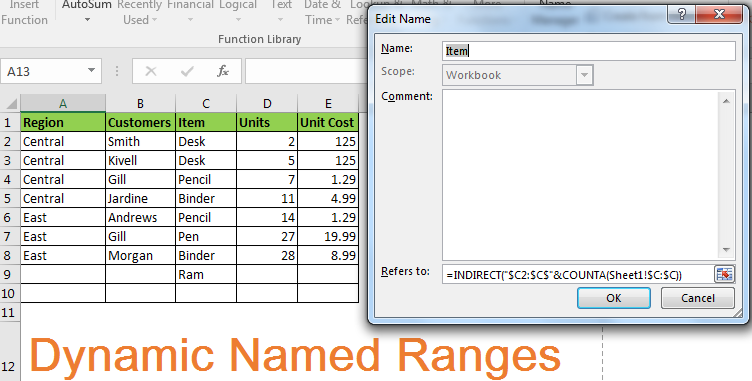



How To Use Dynamic Named Ranges In Excel
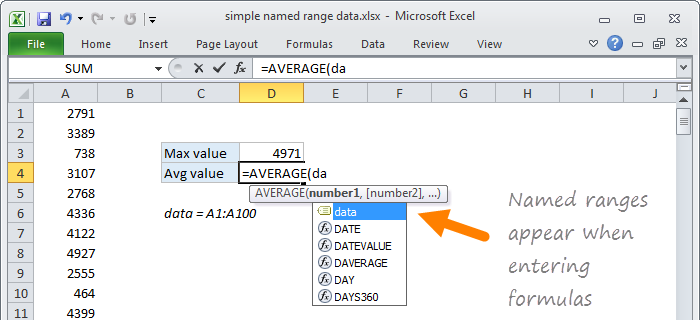



Named Ranges In Excel Exceljet
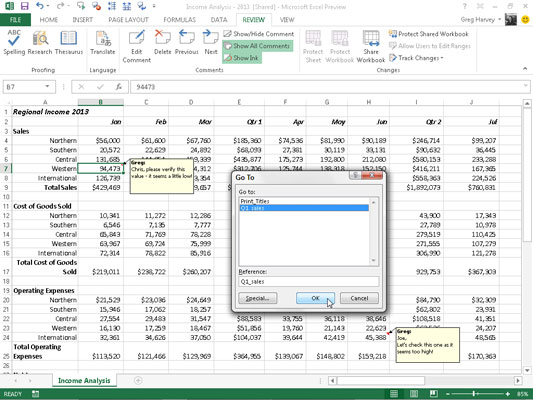



How To Name A Cell Or Cell Range In Excel 13 Dummies




Step By Step How To Use Named Ranges In Excel With Practice Workbook




Working With Range Names In Formulas Building Basic Formulas In Excel 13 Informit




How To Assign A Name To A Range Of Cells In Excel




Excel Dynamic Named Ranges W Tables Chart Automation Analytics Demystified




Naming A Cell Or Range In Excel With Formula Excelnumber
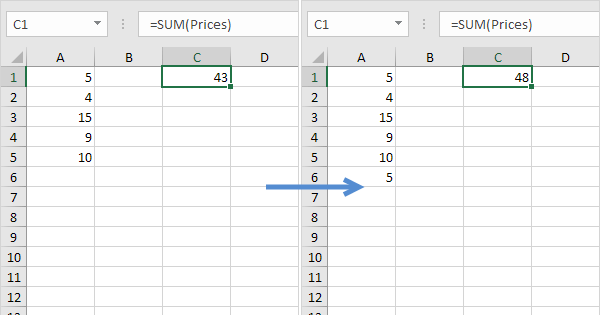



Dynamic Named Range In Excel Easy Excel Tutorial




How To See All Of The Named Cell Ranges In An Excel Workbook
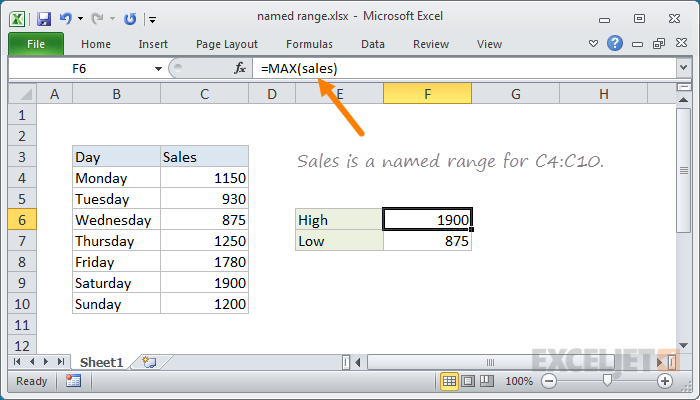



Excel Named Range Exceljet
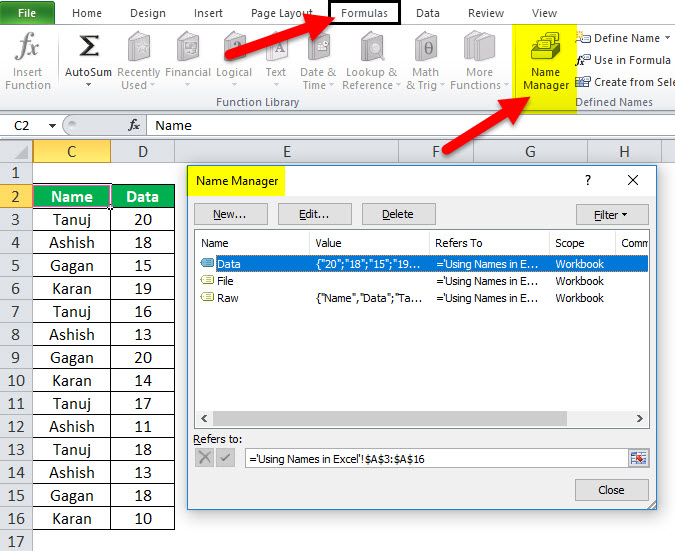



Name Range In Excel Examples How To Use Names In Excel
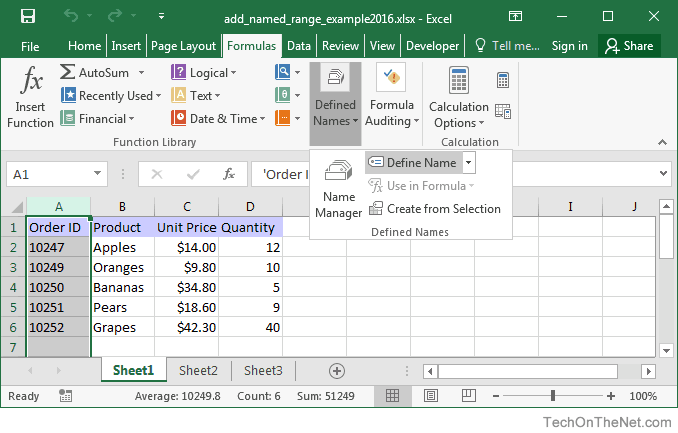



Ms Excel 16 Add A Named Range




Excel Range Names In Excel Formula In Name
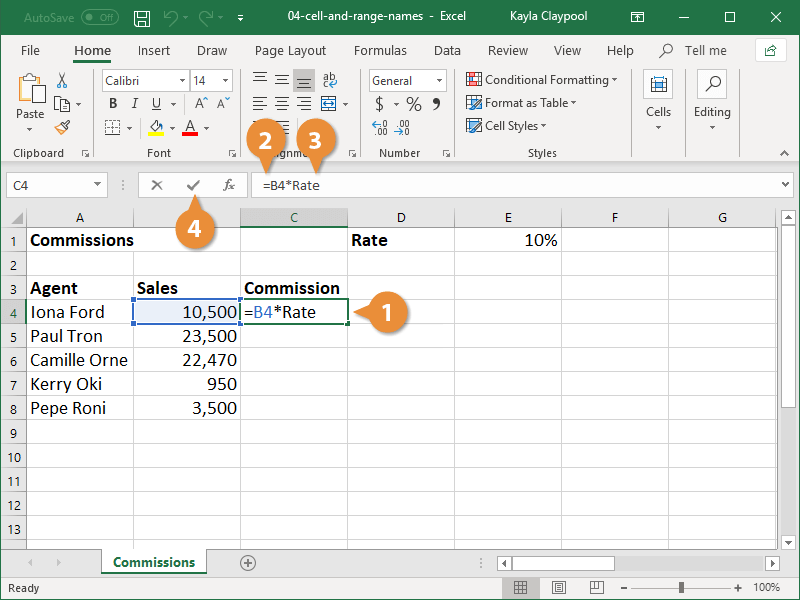



Excel Named Range Customguide
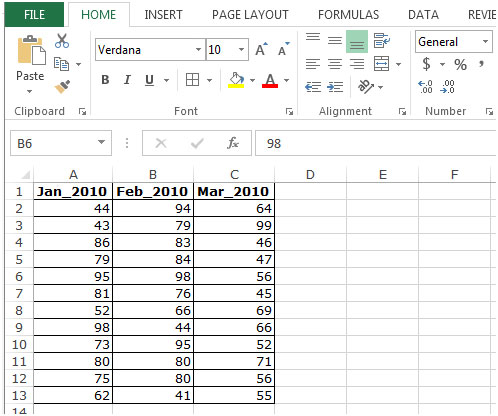



Using A Range Name In Formula In Microsoft Excel
:max_bytes(150000):strip_icc()/NamedRangeNameManager-5c192805c9e77c0001a4b91c.jpg?w=900&ssl=1)



Insert Name Define Excel
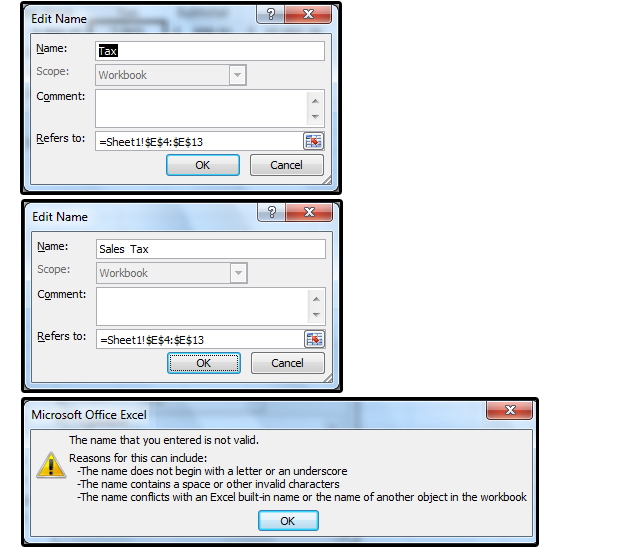



Excel Pro Tips How To Create Define And Use Named Ranges Pcworld
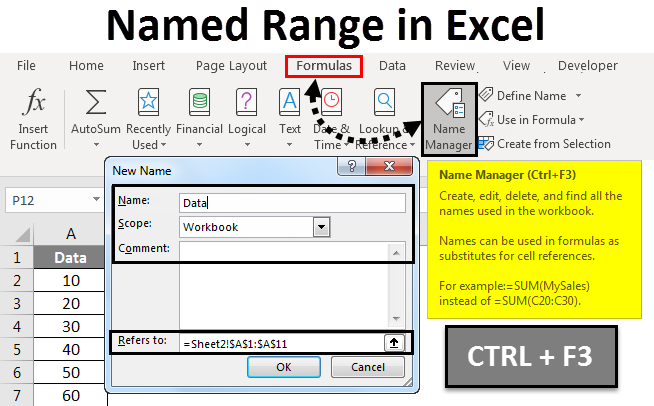



Named Range In Excel How To Create Named Range In Excel



Excel Index Function
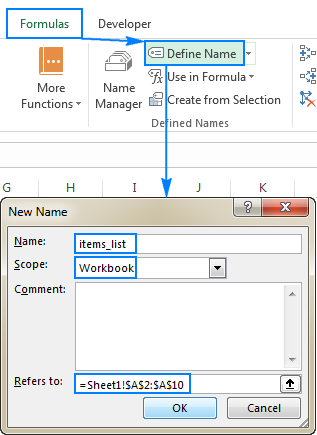



Excel Names And Named Ranges How To Define And Use In Formulas




Named Range Named Constant In Excel Tech Funda
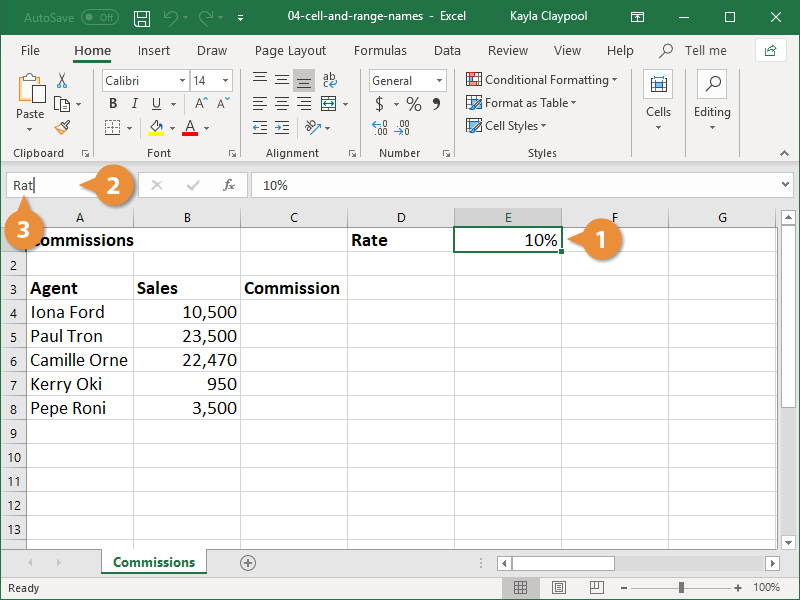



Excel Named Range Customguide




Excel Creating A Range Name Youtube



0 件のコメント:
コメントを投稿